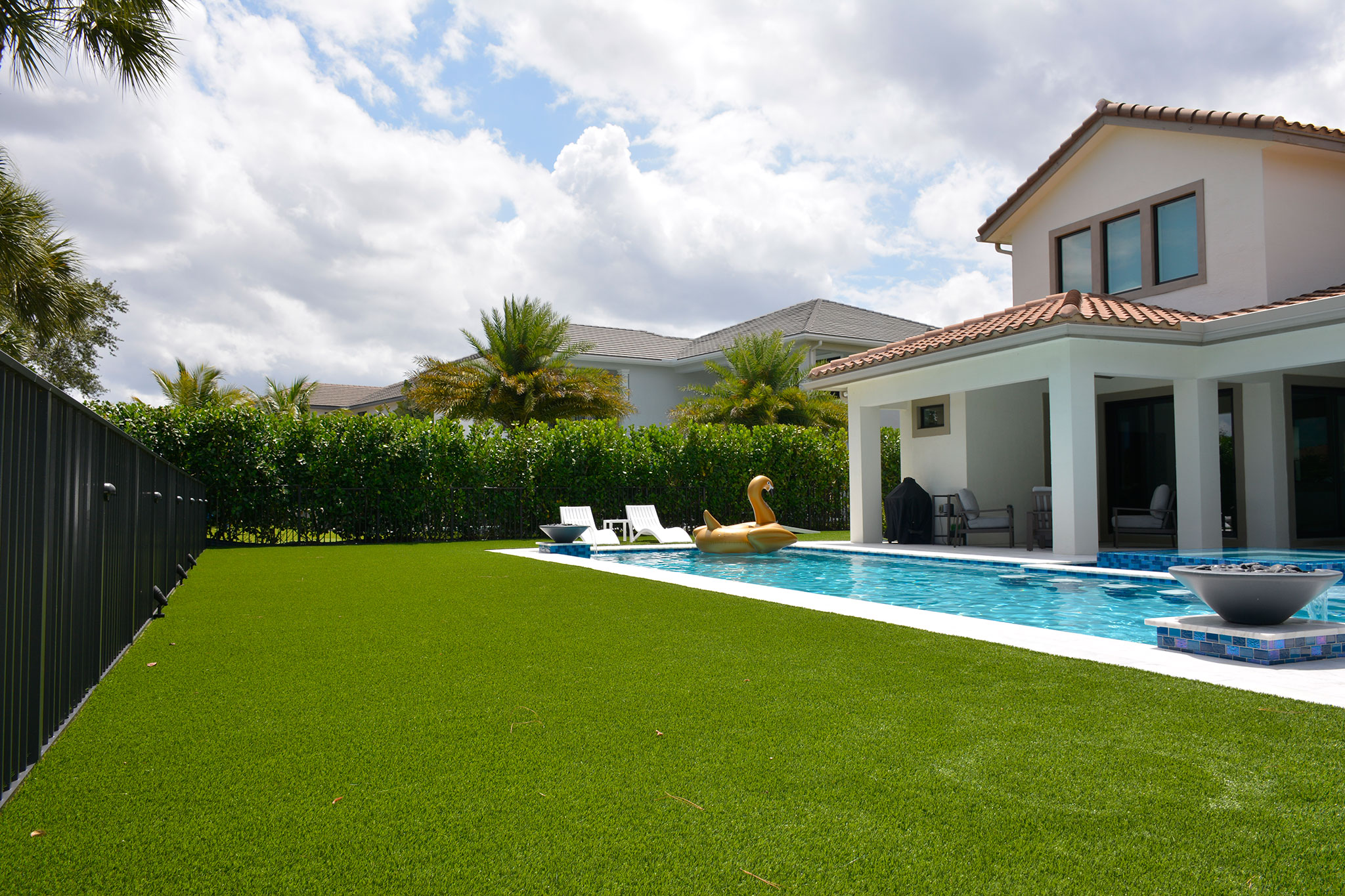Artificial Grass
Artificial grass, also known as synthetic turf, has become a popular choice for backyards in recent years. It offers a low-maintenance alternative to natural grass, providing a lush green look all year round. Here’s a brief overview of artificial grass for backyards.

Artificial grass is made from synthetic fibers, typically a combination of polyethylene and polypropylene. These materials are designed to mimic the look and feel of real grass, providing a soft and natural texture underfoot. The grass blades are typically UV-stabilized to withstand sun exposure and maintain their color over time.
One of the primary advantages of artificial grass is its low maintenance requirements. Unlike natural grass, which requires regular mowing, watering, and fertilizing, artificial grass is virtually maintenance-free. It doesn’t need to be watered, saving both time and resources. Additionally, you don’t have to worry about weeds or pests, eliminating the need for harmful chemicals such as herbicides or pesticides.
Artificial grass is also highly durable and can withstand heavy foot traffic. It is designed to withstand different weather conditions, including rain, snow, and extreme heat. It doesn’t get muddy or develop patches, making it an ideal choice for areas with high usage, such as children’s play areas or backyard sports courts.
For those concerned about environmental impact, artificial grass has both advantages and drawbacks. On the positive side, it reduces water consumption since it doesn’t require irrigation. It also eliminates the need for gas-powered lawnmowers, reducing air and noise pollution. However, the production and disposal of artificial grass can have environmental implications, as it involves the use of non-renewable resources and synthetic materials. It’s essential to consider these factors when making a decision.
Artificial Grass Image Gallery
Click on a thumbnail below to see a larger image.
[widgetkit id=”31″]
When installing artificial grass, proper groundwork is crucial for achieving optimal results. It typically involves preparing the ground, removing existing vegetation, and adding a layer of crushed stone or sand to create a stable base. A professional installation ensures proper drainage and a smooth, seamless finish.
In terms of aesthetics, artificial grass provides a consistent and vibrant appearance throughout the year. It doesn’t fade or turn brown during droughts or winter months. Moreover, it can be customized to fit any backyard shape or size, allowing for creative landscaping possibilities.
In conclusion, artificial grass offers a low-maintenance, durable, and aesthetically pleasing alternative to natural grass for backyards. While it has its environmental considerations, it provides several benefits such as water conservation, reduced maintenance, and a year-round green appearance. Whether you’re looking to create a play area, a pet-friendly space, or simply want to enjoy a beautiful lawn without the hassle, artificial grass is worth considering for your backyard.

